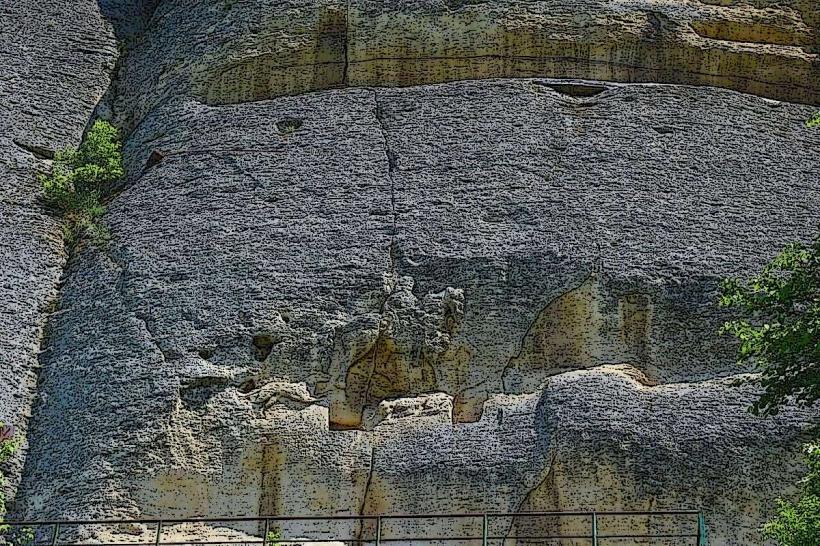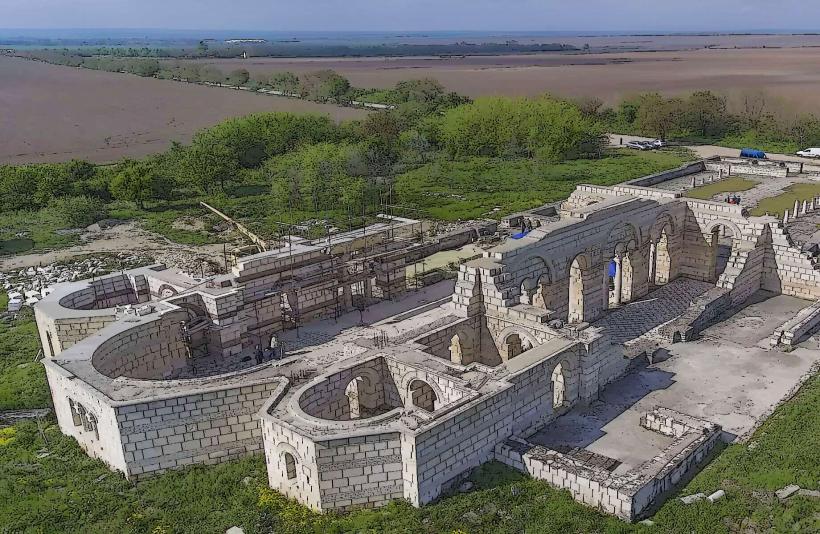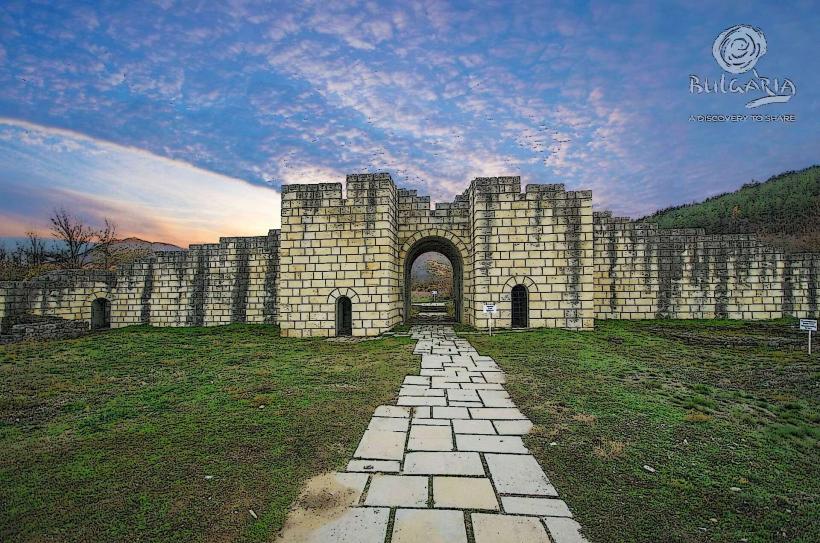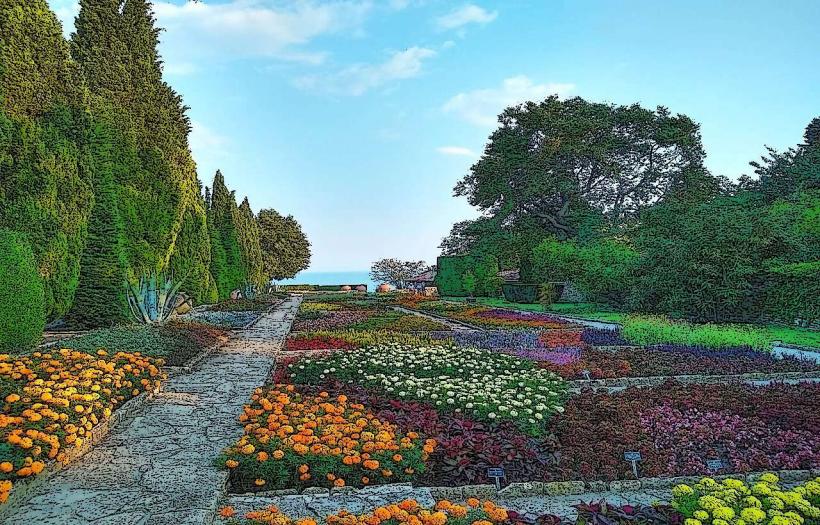Information
Landmark: Shumen FortressCity: Shumen
Country: Bulgaria
Continent: Europe
The Shumen Fortress is one of the most significant historical and archaeological landmarks in Shumen, Bulgaria. Situated on a hilltop overlooking the town, the fortress offers panoramic views of the surrounding landscape and serves as a reminder of the region's rich history spanning several millennia. This ancient fortress is a testament to the area's strategic military importance and reflects various historical periods, including the Thracian, Roman, Byzantine, Medieval Bulgarian, and Ottoman eras.
Historical Background
- Origins: The Shumen Fortress has been inhabited since ancient times, with evidence suggesting its use as early as the 5th century BC during the Thracian period. It was initially a Thracian settlement, likely used for defense and as a base for regional control.
- Roman and Byzantine Influence: Over time, the fortress became a Roman and later a Byzantine military stronghold due to its strategic position. It provided a crucial point for controlling the surrounding area, including the ancient trade routes.
- Medieval Bulgarian Period: The fortress gained significant importance during the First Bulgarian Empire (681–1018) and continued to serve as a key defensive site throughout the Second Bulgarian Empire (1185–1396). It was heavily fortified, and its walls and towers were strengthened to resist invasions from various external forces, including the Byzantines and Ottomans.
- Ottoman Period: In the 14th century, the Ottoman Empire conquered the region, and the Shumen Fortress remained under Ottoman control until the late 19th century. It played a lesser role during this time but continued to serve as a symbol of regional authority.
Architectural Features
The Shumen Fortress is located on Shumen Hill, which provides natural defense advantages, and its remains show various layers of construction from different historical periods.
- Walls and Towers: The fortress features well-preserved sections of fortification walls and towers, some of which date back to the medieval Bulgarian period. These structures were designed to protect the fortress from invaders and were built with robust materials, including large stones and bricks.
- Gateways: The fortress originally had several gates that allowed entry into the fortified area. The main entrance, which has been partially reconstructed, includes remnants of stone archways and defensive mechanisms like portcullises.
- Defensive Structures: The fortress is built with various defensive features, including a double defensive wall at the base, designed to withstand sieges. The inner area was surrounded by towers that provided vantage points for spotting enemies and acting as strongholds during battles.
- Religious Buildings: Within the fortress, archaeologists have discovered the remains of churches and chapels, indicating the fortress's role as a cultural and religious center in addition to its military function.
Archaeological Discoveries
- Excavations at the fortress site have uncovered significant archaeological finds from various periods, including tools, ceramics, coins, and weapons. These artifacts help historians understand the everyday life of the fortress inhabitants, as well as the military activities that took place there.
- A particularly notable discovery was the remains of a large church, believed to have been used during the Second Bulgarian Empire. The church features Byzantine-style mosaics and is considered one of the most important finds at the site.
Historical Significance
- Strategic Location: The fortress’s position on Shumen Hill allowed it to control the surrounding Danube Plain and important trade routes that passed through the region. It was a critical point for defense against invasions and played a key role in the defense of the Bulgarian states.
- Military Importance: Throughout the centuries, the fortress was used to repel Byzantine and Ottoman forces. It served as a base for Bulgarian military leaders and was an essential point in the defense of the Bulgarian Empire.
- Cultural Role: The fortress was not just a military stronghold but also a center for cultural and religious activities, as evidenced by the churches and other religious sites found within the walls.
Modern Context
- Tourism: Today, the Shumen Fortress is a popular tourist destination. The site is open to the public, and visitors can explore the well-preserved sections of the walls, towers, and gates. The views from the fortress provide a stunning panorama of Shumen and the surrounding countryside.
- Restoration and Preservation: Some parts of the fortress have been partially restored, with efforts to preserve the ruins while maintaining the site’s historical integrity. The Shumen Fortress Museum also provides exhibits and information about the fortress’s history and archaeological findings.
- Historical Events: The fortress is a symbol of Shumen’s history and serves as a focal point for local celebrations, particularly those related to Bulgarian national history and the Bulgarian liberation movement from Ottoman rule.
Conclusion
The Shumen Fortress stands as one of the most important historical and archaeological sites in Bulgaria. Its long history, spanning from the Thracian period to the Ottoman era, reflects the military, cultural, and strategic significance of the region. The fortress’s architectural remains, archaeological finds, and panoramic views make it a key landmark in Shumen and a must-visit site for those interested in Bulgaria’s rich historical heritage.








